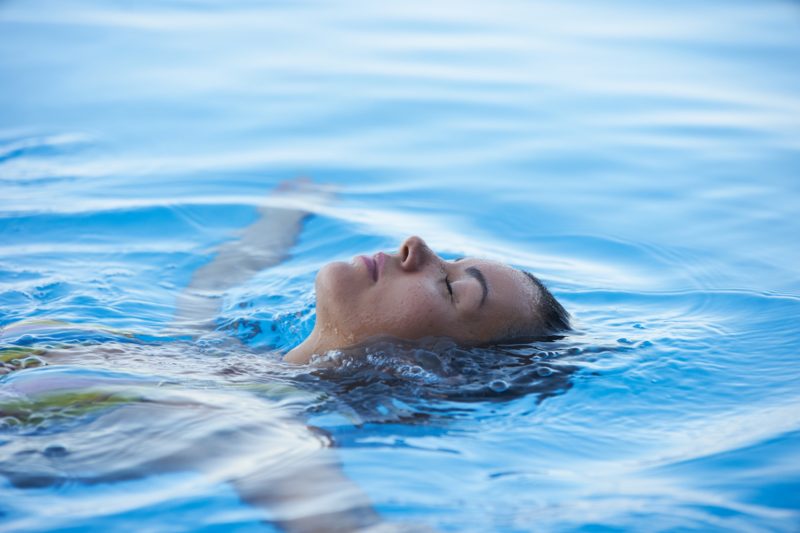Guest post contributed by CEENTA
What is “Swimmer’s Ear”?
If you get water in your ear, and it stays inside your ear, it can cause a condition known as swimmer’s ear. Swimmer’s ear (or otitis externa) is an infection of your outer ear caused by bacteria that can grow in this moist environment. Symptoms include ear pain, itching, ear canal swelling, redness, discomfort, and fluid drainage. If it gets worse, you may experience more intense pain, itching, redness, and fluid damage. In severe cases, the pain may spread to the rest of your face, neck, or side of your head. The lymph nodes in your neck may swell, and you may also develop a fever.

How Does Water Get Stuck in Your Ear in the First Place?
Water getting stuck in your ears can happen easily actually, from swimming in bodies of water or pools to bathing to showering for long durations. However, some people are more prone to it than others. If you have excessive ear wax, narrow ear canals, or have bone growths in your ear canal, the water can be trapped inside.
How to Avoid It
You can keep the inside of your ears dry by wearing ear plugs or a swimmer’s cap. Thoroughly drying the outside of your ear when you get out of the water can also help prevent water from draining into it. And taking care to remove water from your ears when you get out of the pool or after long periods of having your head / ears under or in the water.
How to Remove Water From Your Ears
There are plenty of simple ways to get water out of your ear. First, try tilting your head in the direction of the blocked ear and jiggling your earlobe. You can also lie down on a towel and let gravity draw the water from your ear.
The hot air from a hair dryer may also evaporate the water. Make sure to turn it to its lowest setting and hold it about a foot from your ear, though.
Finally, some over-the-counter medicines can help break up the moisture and kill any bacteria that may be growing in the water. Do not use products like hydrogen peroxide or alcohol without consulting a physician, however, as these might burn when applied to your ear.
One Don’t
Don’t use a Q-tip or other object you would have to insert into your ear. Doing so can not only force the water deeper into your ear, but it can compress earwax in your ear canal or even puncture your eardrum.

Should I See a Doctor for Swimmer’s Ear?
Yes, you should make a doctor’s appointment if you have persistent ear pain, swelling, or drainage so you can be evaluated for possible swimmer’s ear. Swimmer’s ear usually requires treatment with prescription ear drops.
Water in the ear can be a nuisance, but we don’t want it to cause any health problems. If you think you have swimmer’s ear, or are just having trouble getting the water out, don’t hesitate to make an appointment with a CEENTA doctor today.
This blog is for informational purposes only. For specific medical questions, please consult your physician.
Charlotte Eye Ear Nose & Throat Associates, P.A. (CEENTA) has nearly 140 providers in almost 20 locations bringing specialty care to the community. CEENTA provides comprehensive pediatric and adult eye, ear, nose and throat care, and highly specialized care, too.
These services include but are not limited to: audiology, allergy treatment, cataract surgery, cochlear implants, cornea diseases, diabetic eye care, glaucoma treatment, head and neck cancer, neuro-ophthalmology, oculoplastics, optical and contact lenses, pediatric airway care, sleep medicine, thyroid treatment, and voice and swallowing care.
To schedule an appointment with any of CEENTA’s board-certified physicians, please call 704-295-3000.

Charlotte Eye Ear Nose & Throat Associates, P.A. (CEENTA) has nearly 140 providers in almost 20 locations bringing specialty care to the community. CEENTA provides comprehensive pediatric and adult eye, ear, nose and throat care, and highly specialized care, too.
These services include but are not limited to: audiology, allergy treatment, cataract surgery, cochlear implants, cornea diseases, diabetic eye care, glaucoma treatment, head and neck cancer, neuro-ophthalmology, oculoplastics, optical and contact lenses, pediatric airway care, sleep medicine, thyroid treatment, and voice and swallowing care.
To schedule an appointment with any of CEENTA’s board-certified physicians, please call 704-295-3000.
